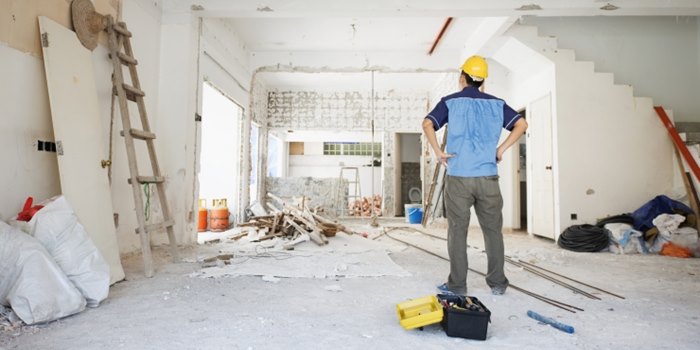Construction of any structure progresses with the excavation of Earth to lay the foundations. Quite a few challenges are faced during subsurface excavation works. The presence of groundwater poses a major risk during construction which has caused failures of structures even before construction is completed. The process of dewatering is adopted to reduce the possibility of any structural failure during subsurface excavations.
Dewatering
The removal of excess water from saturated soil mass is termed as dewatering.
Construction projects like dams, sewer lines and foundations of buildings are carried below the water table. Such excavations require the lowering of the water table to prevent sloughing, seepage and settlement of soil.
For water-based construction projects, Dewatering is performed to get rid of the water present in the site and avoid building underneath the water. Dewatering allows safe and sound progress of construction in areas where groundwater or water bodies are present.
Dewatering Techniques
Ditches and swamps:
This method is suited for areas where the ground is sloping and the flow of groundwater is influenced by gravity. Ditches are dug in the site for water to flow into them. The water is then pumped out to mitigate the saturation of the soil. This method is used for shallow excavations and where the soil is coarse-grained.
Well point system:
This system of dewatering involves the installation of a series of pipes connected to a dewatering pump at the header end and to a suction pipe at the footer end. The pump draws water from the saturated area through the suction pipe and discharges it far from the site through pipes. The operation of this system is simple and is best suited for sandy soils. This method is often used in pipeline trench excavation.
Shallow well system:
For shallow excavations, Dewatering is done by use of only pumps and no wells. Pumps are installed at the subsurface level and water is extracted. This method is handy in sites where drawdown amount is less and drilling of pipes is difficult.
Vacuum method:
A vacuum is created in the soil using a vacuum pump. The use of vacuum pump creates an imbalance in pressures of soil and atmosphere. The difference in pressures causes consolidation of the soil mass by the expulsion of pore water. This method increases the stiffness of soil and mainly befits fine-grained soils.
Electro Osmosis method:
This method is suitable only for fine-grained cohesive soils. Current is passed into saturated soil mass which drives soil water from anode to cathode. The anode here are steel rods and the cathode is drainage wells. The arrangement is done in such a way that the anode is far from site so that water is discharged away from the site.
Dewatering in Dams
Water bodies are not convenient places for construction and most of the tools and equipment we have to work better in dry areas. The construction of dams becomes challenging because of the presence of water. The site Dewatering Techniques involved in the construction of dams are:
Cofferdams:
Cofferdams are constructed in the wet to hold back water from the site. Cofferdams are deposition of soil mass in water to create an embankment and serve as an impoundment. Generally, two cofferdams are constructed one at the upstream side and other at downstream to enclose the area. The held water is then pumped out and construction of the dam begins.
Sheet piles:
As soil is permeable any embankment made of the soil allows water to seep which needs to be pumped out constantly. To overcome this steel sheet piles are driven into the water until required stability is reached. The marked area is enclosed by sheet piles in succession and the confined water is then pumped out.
Diversion tunnels:
The course of a river is diverted from the actual construction site through huge diversion tunnels and site is made dry for construction work. Hoover dam was build by diverting water through massive tunnels. The diversion tunnels constructed can be used as spillways after completion of the dam.
Dewatering problems
The problems encountered during Dewatering are:
Control of pressure:
As water is removed from its original position a pressure difference is created between the impoundment and held backwater. The pressure difference results in continuous seepage of water into the site which can cause destabilization and collapse of the structure.
Slope stability:
Slope stability is a major issue as uncompacted and saturated soil has low shear strength. Any subsidence in the level of soil mass can lead to disastrous events like a landslide or heavy surge of water into the impoundment threatening the lives of workers.
Precautions during Dewatering
- Safety is of absolute importance during dewatering. Lack of supervision can lead to damage to life and property.
- The rate of drainage from the site should be controlled considering the stability of the surrounding land. Heavy drawdowns can lead to slope instability and disrupt the integrity of excavated soil.
- Continuous pumping of water from the site should be undertaken if seepage is observed.
- Proper arrangements should be taken to maintain slope stability.
- Dewatering should be stopped if any signs of erosion of soil are observed. Environment safety measures should be considered while Dewatering to avoid contamination of water extracted.
Conclusion
Optimization of water table depth is of major importance in the excavation of foundations, trenches, pipelines. The problems caused by inappropriate dewatering methods will increase the total cost and time of construction. As much as the need for dewatering in construction is the management of collected water from the site is also paramount.


